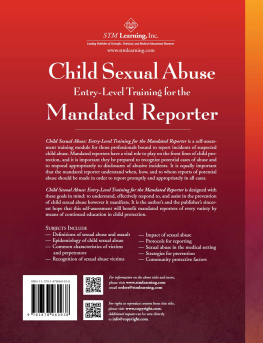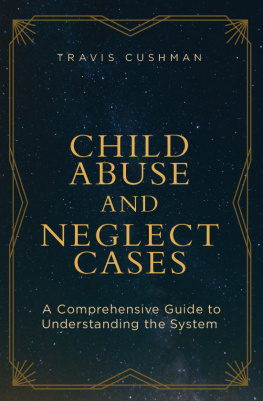Child Abuse and Protection
Literature in the child abuse and child protection arena has tended to adopt either a practice or legal perspective. Drawing on their expertise as researchers and leaders in their field, Julia Davidson and Antonia Bifulco offer a comprehensive and cohesive book on child abuse and child protection, drawing on both criminological and psychological perspectives on all forms of child maltreatment and child protection practice together with impacts on the victims.
This book considers a range of areas, from definitions of child abuse and discussions of its prevalence, to an examination of the experiences of children in care, to international perspectives on children within the criminal justice system, to the emergence of online child abuse and the increasing awareness of historical abuse. Each chapter draws together key elements in the field, including prevalence and definition, different disciplinary approaches; different practice challenges; international impacts; and technological issues. Brief case studies throughout the book reflect the voice or experience of the child, ensuring that the focus remains on the child at the centre of the abuse.
Balancing coverage of theory and research and considering implications for practice and policy, this book will appeal to a range of disciplines, including criminology, psychology, psychiatry, social work and law.
Julia Davidson is Professor of Criminology at the University of East London and Honorary Professor at the Centre for Abuse and Trauma Studies, Middlesex University, UK.
Antonia Bifulco is Professor of Lifespan Psychology and Head of the Department of Psychology at Middlesex University, UK. She is Director for the Centre for Abuse and Trauma Studies at Middlesex University.
Child Abuse and Protection
Contemporary Issues in Research, Policy and Practice
Julia Davidson and Antonia Bifulco
First published 2019
by Routledge
2 Park Square, Milton Park, Abingdon, Oxon OX14 4RN
and by Routledge
711 Third Avenue, New York, NY 10017
Routledge is an imprint of the Taylor & Francis Group, an informa business
2019 Julia Davidson and Antonia Bifulco
The right of Julia Davidson and Antonia Bifulco to be identified as authors of this work has been asserted by them in accordance with sections 77 and 78 of the Copyright, Designs and Patents Act 1988.
All rights reserved. No part of this book may be reprinted or reproduced or utilised in any form or by any electronic, mechanical, or other means, now known or hereafter invented, including photocopying and recording, or in any information storage or retrieval system, without permission in writing from the publishers.
Trademark notice: Product or corporate names may be trademarks or registered trademarks, and are used only for identification and explanation without intent to infringe.
British Library Cataloguing-in-Publication Data
A catalogue record for this book is available from the British Library
Library of Congress Cataloging-in-Publication Data
Names: Davidson, Julia C., author. | Bifulco, Antonia, 1955 author.
Title: Child abuse and protection : contemporary issues in research, policy and practice / Julia Davidson and Antonia Bifulco.
Description: 1 Edition. | New York : Routledge, 2018. | Includes bibliographical references and index.
Identifiers: LCCN 2018019013 | ISBN 9781138209985 (hardback) | ISBN 9781138209992 (pbk.) | ISBN 9781315456256 (ebook)
Subjects: LCSH: Child abuse. | Child abusePrevention.
Classification: LCC HV6626.5 .D38 2018 | DDC 362.76dc23
LC record available at https://lccn.loc.gov/2018019013
ISBN: 978-1-138-20998-5 (hbk)
ISBN: 978-1-138-20999-2 (pbk)
ISBN: 978-1-315-45625-6 (ebk)
Typeset in Interstate
by Apex CoVantage, LLC
For
Glenn and Rhys Davidson
Lucia Bifulco and in memory of Vincent Bifulco.
Much is known about child abuse and its long-term impacts, and the wide-scale damage it causes to individuals, families and society. But each era faces different challenges in understanding and communicating key facts about this complex phenomenon, and effectively preventing or intervening to reduce harm. From the current perspective (201718) awareness about and arguably the reach of child abuse particularly via the Internet has grown in ways previously not envisaged: to the past in relation to historical abuse and that occurring in institutional, establishment and celebrity settings, and to the future in relation to technological change and online grooming and entrapment of children for abuse. Understanding of abuse impact has also widened: damage to the child is now known to include hampered development of the neurological, hormonal and brain-systems with the possibility of epigenetic change to the genetic inheritance across generations. This is in addition to the well-documented social adversity and psychological and mental health damage entailed. All these have implications for childhood, adolescent and later life development which can extend to childbirth/parenthood, menopause, ageing experience and early mortality. It is shown to relate to illness such as diabetes and cardiovascular disease, as well as emotional and behavioural disorders. This places child abuse as a central public health concern given its still high prevalence and its impact on the populations mental and physical health. The concerns are international, with a European focus on harmonising policy and legislation on child protection, but with acknowledged major gaps in the wider international field in measuring, recognising and intervening in child abuse. With high population mobility, and easy online contact across national borders, the scope of abuse links both international and local concerns.
Knowledge of child abuse has grown exponentially. This places a large burden on professionals: not only the social workers, police, psychologists and paediatricians directly involved, but also on teachers, youth and playgroup workers and any who have formal contact with children who need to be aware of safeguarding issues. It takes a toll individually on practitioners required to face the reality and emotional burden of witnessing child abuse or its impacts daily. This can lead to serious shortages of professionals robust enough to agree to work in child protection services and to high staff turnover of staff engaged in work in this demanding area. This dips after serious case reviews when blame for child deaths is directed at professionals by the media. There are serious responsibilities involved. Social workers, police and judges need to determine beyond reasonable doubt that abuse may have occurred. This can lead to the child being taken away from the family with parents or carers potentially being prosecuted. This is hurtful to the child as well as to the wider family. Alternatively, actions may be taken to add support to the family to enable better parenting and family functioning to ameliorate the effects. For this, social work teams need to decide on the probability of evidence whether a child is in danger or not. For this, they need accurate collection of information and a precise knowledge of abuse thresholds to judge likelihood of future harm.
Yet there are many varieties of abuse to understand. These can be related to each other and usually in complex combinations. Some are known to be hard to assess, such as emotional abuse. Many abuses occur in the context of family conflict and domestic violence, fuelled by poverty, immigration, drug and alcohol misuse, parental stress, or in non-traditional families where there maybe isolation (e.g. single parents) or schisms (reconstituted families). Others come with diverse cultural practice (such as female genital mutilation) or through migration (child trafficking). The assessment brief becomes increasingly demanding, covering a range of specialisms, and requires the assistance of multi-disciplinary teams with broad expertise and knowledge. This requirement brings its own challenges in terms of professional working practice and communication and record keeping. It can also at times lead to delays and the danger of families and children falling between the cracks where services are not joined-up.






